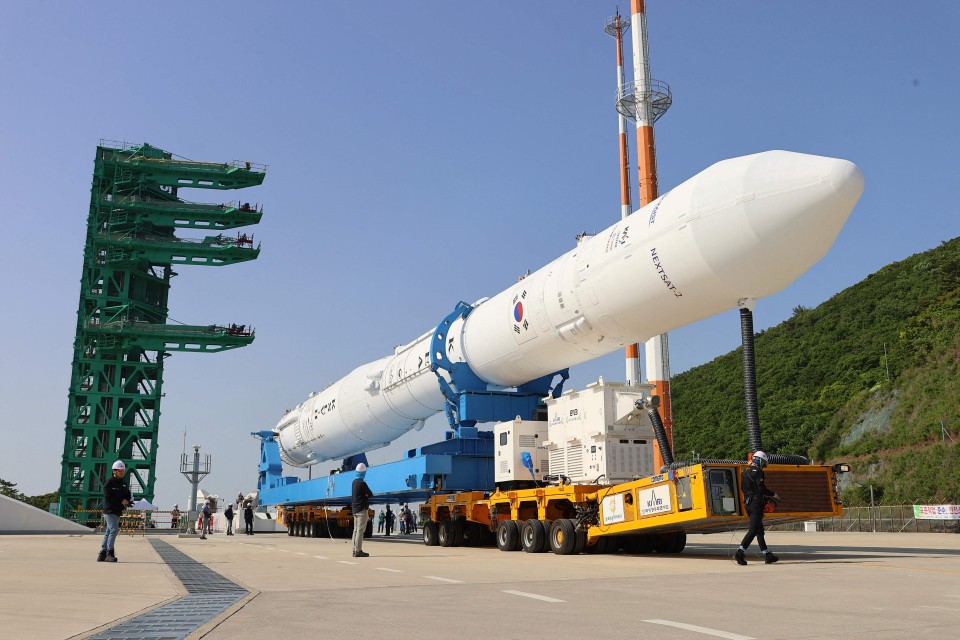
SEOUL, South Korea, May 24, 2023 (AFP) — South Korea was set to launch its homegrown Nuri rocket Wednesday and try to put a working satellite into orbit — potentially a key development for the country’s burgeoning space program.
This is the third launch of Nuri, following a failed first attempt and a successful second mission last year, but during those tests the rocket carried payloads mainly designed for verifying the performance of the launch vehicle.
This time, the rocket will be topped with eight working satellites, including an actual “commercial-grade satellite”, according to the country’s science ministry.
The three-stage rocket, more than 47 meters (155 feet) long and weighing 200 tons, will be launched from the Naro Space Center in the country’s southern coastal region at 18:24 local time (0924 GMT).
Nuri was transferred and erected at the launch pad on Tuesday.
“The third launch is aimed at putting a domestically developed satellite with observation missions into the target orbit,” Ko Jeong-hwan, director of the Nuri rocket project at the Korea Aerospace Research Institute (KARI), told reporters.
The 179.9-kilogram NEXTSat 2, developed by the Korea Advanced Institute of Science and Technology (KAIST), is the first and main payload that will be placed in orbit at an altitude of 550 kilometers, KARI said.
The satellite has a small synthetic aperture radar that can capture high-resolution images regardless of weather conditions.
The success of the third launch will depend on whether the eight satellites are properly placed into their target orbits.
The three-stage Nuri rocket has been a decade in development at a cost of 2 trillion won ($1.5 billion).







